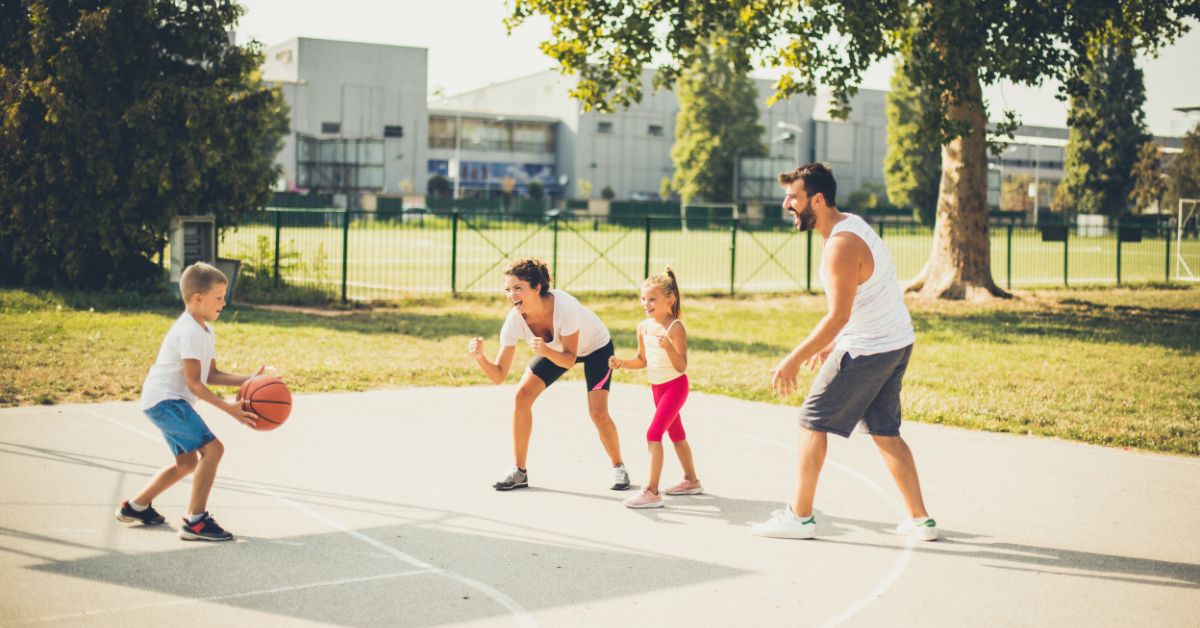For many homeschooling families, academics often take center stage, but physical education (PE) is just as important. It boosts not only physical health but also mental well-being, focus, and social skills. One of the best parts of being a homeschooler is having the flexibility to tailor PE lessons to your children’s needs and interests.
Below, you’ll find actionable advice and homeschool PE ideas to keep your kids moving, engaged, and healthy.
Why Physical Education Matters In Homeschooling
Physical education isn’t just about keeping kids active. It’s also a great opportunity to teach them life-long habits related to health and fitness. When kids exercise, they develop better motor skills, improve their coordination, and strengthen their cardiovascular systems. Furthermore, studies show that regular physical activity can reduce anxiety, improve mood, and promote better sleep patterns, all of which are essential for learning.
For homeschoolers, PE adds variety to the day, provides a much-needed break from sitting at a desk, and offers plenty of chances to spend time as a family. Plus, it encourages kids to explore sports, physical challenges, and teamwork on their own terms.
Setting Up a PE Routine at Home
The key to successful PE in a homeschool setting is to make it part of your daily or weekly schedule. Here are some practical tips to get started:
- Schedule it like any other subject: Dedicate a specific time in your weekly routine for physical activities. It could be daily, two to three times a week, or whatever works best for your family.
- Set goals: Work with your kids to create specific goals such as running a mile without stopping, mastering a new sport, or simply being active for 30 minutes every day.
- Track progress: Use a chart or checklist to track your children’s activities and achievements. Seeing their progress will encourage consistency.
- Provide choices: Engage your kids by offering options for activities. Let them choose between doing a yoga session, riding their bikes, or kicking a soccer ball.
Keep in mind that kids will be more likely to participate if the activities are fun and age-appropriate.
Homeschool P.E. Ideas For All Ages
Indoors Activities
Not every physical activity requires a large backyard or outdoor space. These indoor ideas are great for rainy days or small living areas:
- Yoga for kids: Yoga enhances flexibility and focus. Use kid-friendly YouTube videos or apps for guidance.
- Obstacle courses: Set up a simple course using pillows, chairs, and household items. Challenge kids to complete the course as fast or as creatively as possible.
- Dance parties: Put on your child’s favorite music and have a dance-off in the living room. This is not only a workout but also tons of fun.
- Exercise videos: Short, engaging workout videos for kids, such as jump rope routines or beginner aerobics, are perfect for burning energy indoors.
- Fitness challenges: Set goals like doing 10 push-ups or planking for 30 seconds, and increase the challenge gradually over time.
Outdoor Activities
When the weather allows, getting outside enhances both play and physical fitness. Here are some ideas to try in your yard, park, or local community:
- Backyard sports: Play basketball, soccer, or badminton. These sports develop coordination, teamwork, and endurance.
- Nature hikes: Walks in parks or nature preserves are great for physical activity and an opportunity to study biology or geography.
- Biking or scootering: Create a safe route and challenge your kids with timed laps or distant goals.
- Water play: On warm days, turn on the sprinkler, play with water balloons, or set up an inflatable pool for splashing and swimming.
- Treasure hunts: Organize a backyard scavenger hunt. Hide objects and provide clues that require running, hopping, or climbing to find them.

Team And Social Activities
Even if you homeschool, physical education can still foster connection with others. Consider these options:
- Join local sports leagues: Many communities offer youth soccer, basketball, or swim teams. Ask other homeschoolers in your area for recommendations.
- Meet-ups with other homeschool families: Organize group PE sessions where kids can play relay races, capture the flag, or kickball.
- Classes at your local gym or recreation center: Yoga, martial arts, or gymnastics are great options for kids who want to learn new skills.
Incorporating Fitness Into Daily Life
Not all physical education has to be a planned session. Sometimes, you can encourage movement simply by weaving fitness into everyday routines. For example, take short walks after lunch, have a family clean-up race where everyone runs to put items back in their place, or set a timer to remind kids to stretch during long study sessions.
Remember, building everyday activity doesn’t have to be complicated. Even small actions like climbing stairs or walking the dog help create an active lifestyle.
Creating a DIY PE Curriculum
Designing your own PE curriculum is easier than it sounds. First, decide on the skills or topics you want to focus on, such as strength, coordination, endurance, or sports techniques. Then, pick activities that build those skills.
For example, if you want to focus on coordination, you could include activities like juggling scarves, balancing on a beam, and bouncing a tennis ball against a wall. If your focus is on cardiovascular fitness, you might schedule jogging, jumping rope, or aerobics. Rotate through these areas to keep things diverse and engaging.
You can also mix in lessons about health and fitness. Take time to teach kids about how their muscles work, the importance of hydration, or eating a balanced diet for energy. Knowledge enhances their motivation to stay healthy.
Making PE Fun with Games and Challenges
Kids love games, and turning physical activity into a fun challenge can keep them invigorated. Here are a few ideas to amp up the fun factor:
- Relay races: Create a variety of tasks for each “leg” of the race, such as hopping on one foot, balancing a ball on a spoon, or crawling.
- Animal movements: Challenge your kids to race while pretending to be different animals such as jumping like a frog, waddling like a duck, or crawling like a crab.
- Minute to win it: Set timers for quick exercise challenges. See how many jumping jacks, sit-ups, or sprints they can do in just 60 seconds.
- Capture the flag: If you have multiple children or play with another family, this game is an excellent way to combine strategy and movement.
- Fitness bingo: Create a bingo card with activities like run a lap, do 10 squats, or stretch for five minutes. Kids can check off boxes as they complete them.
By framing activities as games, you encourage kids to participate without feeling like they’re “exercising.”
The Role of Parents in Homeschool PE
Children often look to their parents for guidance, even when it comes to fitness. You can set the tone by being their partner in physical activity. Join in on the yoga session, go for a jog with them, or compete in a push-up challenge. Your involvement not only builds a stronger connection but also sends the message that fitness is for all ages.
It’s also a chance to show them how to set realistic goals, celebrate small wins, and build persistence. Lead by example, and your kids are likely to follow your enthusiasm for staying active.
Your Homeschool PE Journey
Physical education doesn’t have to be complicated or costly. With a little imagination and planning, you can integrate PE into your homeschool routine in a way that promotes health, learning, and fun. Whether it’s a structured curriculum tailored to learning goals or spontaneous backyard activities, the key is to provide consistent opportunities for movement.
With these homeschool PE ideas, you’ll not only keep your kids active but also help them build healthy habits that last a lifetime. Grab your sneakers and start moving!



